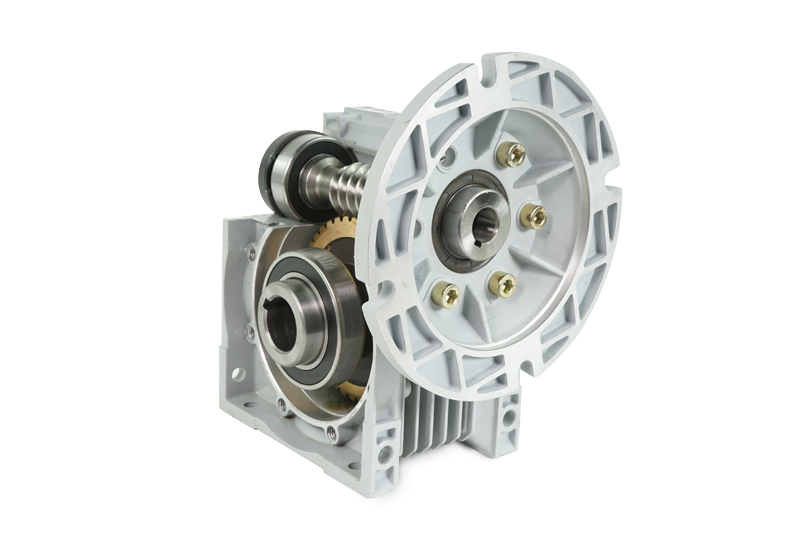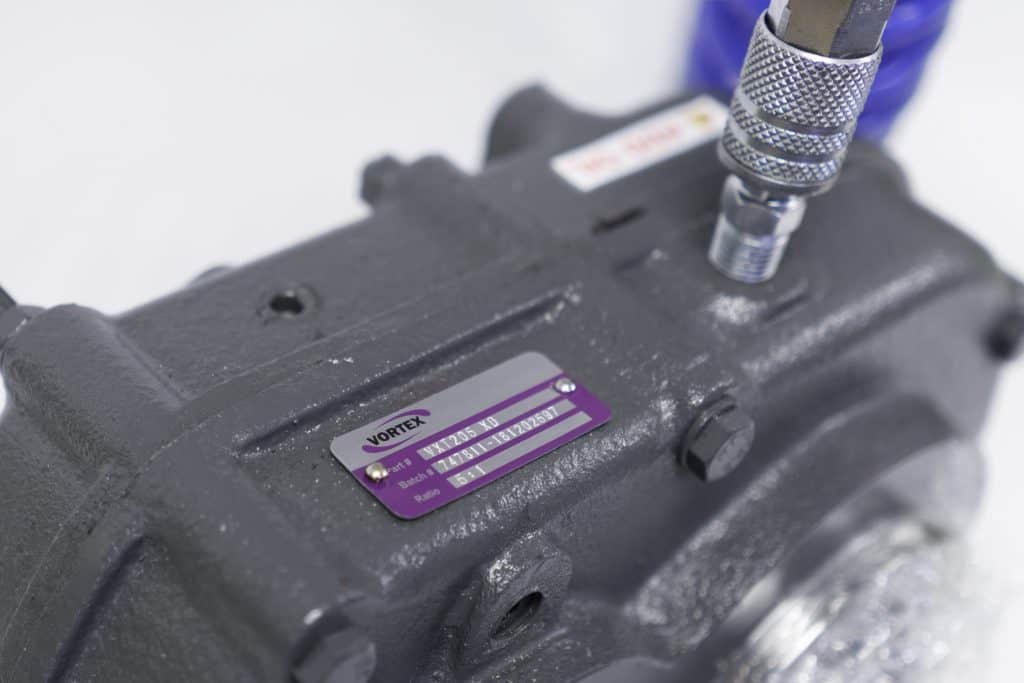Overheating Gearbox: Shaft Mount Reducer Solutions

Are you having trouble with an overheating gearbox? You’ll want to address the problem quickly. When oil temperature rises above 200°F it loses viscosity, which means it can’t reduce friction. This puts your reducer at risk. When you use an overheating gearbox, you’re risking it breaking entirely.
Location is a common contributor to overheating. If the temperature in the area is extreme, the machine is placed in direct sunlight, operates in a high altitude or very humid location, the reducer can overheat. While you can’t just pick up your shop and move, there are ways to decrease oil temperatures in these environments.
Let’s cover solutions to these problems first and then work through mechanical fixes.
It’s just too hot
If the ambient temperature is over 125°F, the simplest way to cool it is likely adding a cooling fan to the machine. Reducing direct sun exposure with a shade or reflective paint can also help. If the oil remains hot, consider using cooling tubes, a heat exchanger, or an oil sump to reduce temperatures.
You’re located in high humidity or high altitude areas
Locations with high humidity or high altitudes can create unique problems for shaft mount reducers. Humidity causes condensation – even within a well-sealed gear reducer. When condensation (water) gets into your oil, it doesn’t work as well. To combat humidity, inspect the lubricant often and change it if necessary. For a large scale operation, dehumidifiers may also be an option.
At 3000 feet above sea level or more, your reducer won’t be able to dissipate heat as quickly. When you set up your drive system, you must take into account the effect of altitude. The altitude will change the thermal capacity of the gearbox. At the same horsepower, the reducer will be fine mechanically but will not be able to dissipate the heat as well. As a result, your gearbox will begin to overheat.
Oil levels and viscosity
Oil is an essential part of your drive system. If your reducer is overheating, it may be due to too much oil. Too little oil can also create an issue and can lead to system damage. For most applications, high-grade, petroleum-based rust and oxidation inhibiting gear oil is suitable. Reducer size, output, and ambient temperature play a role in selecting an oil. Proper fill levels based on mounting position is also critical.
To select an oil, first, measure the ambient air temperature and output RPM of your reducer. Then use these numbers to determine the ISO viscosity grade of oil needed. Then use the viscosity grade to select a lubricant best suited to your application. Please consult the factory for recommendations. For Vortex shaft mount reducers use the tables below.

Is it time for maintenance?
Older oil is less effective. As oil ages, it loses the ability to reduce friction because of oxidation, which increases viscosity. Older oil may also be contaminated. Condensation can cause water contamination (especially in humid areas), and normal operational wear can lead to oil contamination. We recommend a strict maintenance schedule to keep your reducer in top shape and prevent a lot of problems down the line.
Is your drive designed with proper equivalent thermal horsepower?
Every drive system has a specific thermal capacity, and if your motor is putting out more horsepower than designed for, you’re setting the system up for a lot of problems. It’s worth checking to make sure your drive system is designed to suit your prime mover.
The thermal horsepower (HPet) of your drive should be greater than the horsepower of the prime mover (typically an electric motor) in your system. Thermal horsepower is different than standard horsepower because it considers ambient temperature, operating time, altitude, air velocity, and other factors. It’s the practical horsepower capacity of your drive in your specific situation, rather than the ideal on the box.
Consult your manufacturer to calculate this figure accurately. Consult Vortex catalog SMR-15 (pg.48) if you have a Vortex shaft mount reducer.
Do you have proper belt tension?
If the belts on your drive system are too tight (or loose), they can put extra stress on the internal parts of your reducer, such as the gears and bearings. Parts experiencing this additional stress and friction generate heat.
Following proper tension procedures are essential. Placing the sheave as close to the reducer as possible can also help. When these parts are close together, the burden on the bearings and gearing is significantly reduced.
It can be tempting to put off correcting an overheating gearbox, but remember oil over 200°F risks breaking your reducer entirely. That is a costly headache we’d all like to avoid.
Concerns about shaft mount reducer maintenance or other mechanical questions? Explore more of our Knowledge Base for additional information and resources.




